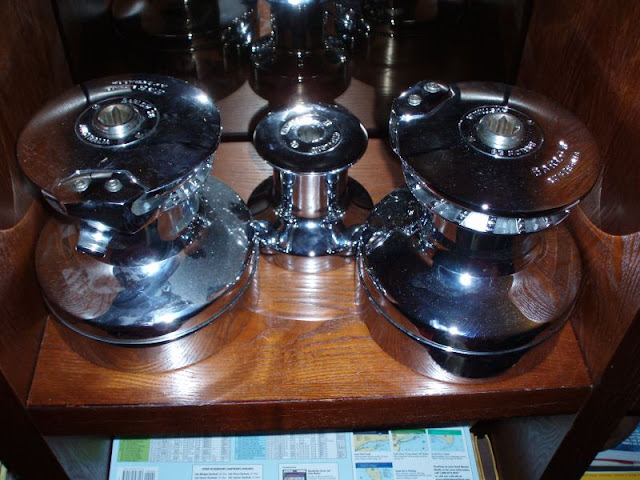I have been researching re-chroming winches and have gotten to the point of knowing what I don't know 
There appear to be several kinds of chrome processes, one that is used for bumpers (decorative chrome) and one that is wear resistant (industrial chrome or "hard chrome").
Now from an engineering perspective I assume that the industrial chrome is stronger and would last longer but it is noted to not have nearly the polish as the decorative chrome. But, do I need the industrial chrome or is the decorative chrome what was there originally?
Does anyone know what the original chrome process is for chromed bronze winches? I am working with Lewmar winches from 1990 (i.e. the previous style) and have 12 large winches to re-chrome.
If anyone has actually had winches re-chromed and used them for a while I would be very interested in the result.
As an interesting aside, as I tend to pull the winches apart for service every winter having to send them out every few years for additional coatings would not be a significant problem, it would just be part of the normal maintenance.
Thanks
There appear to be several kinds of chrome processes, one that is used for bumpers (decorative chrome) and one that is wear resistant (industrial chrome or "hard chrome").
Now from an engineering perspective I assume that the industrial chrome is stronger and would last longer but it is noted to not have nearly the polish as the decorative chrome. But, do I need the industrial chrome or is the decorative chrome what was there originally?
Does anyone know what the original chrome process is for chromed bronze winches? I am working with Lewmar winches from 1990 (i.e. the previous style) and have 12 large winches to re-chrome.
If anyone has actually had winches re-chromed and used them for a while I would be very interested in the result.
As an interesting aside, as I tend to pull the winches apart for service every winter having to send them out every few years for additional coatings would not be a significant problem, it would just be part of the normal maintenance.
Thanks





